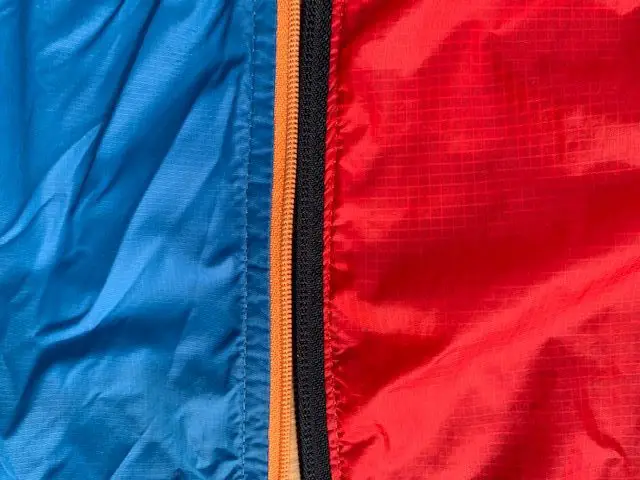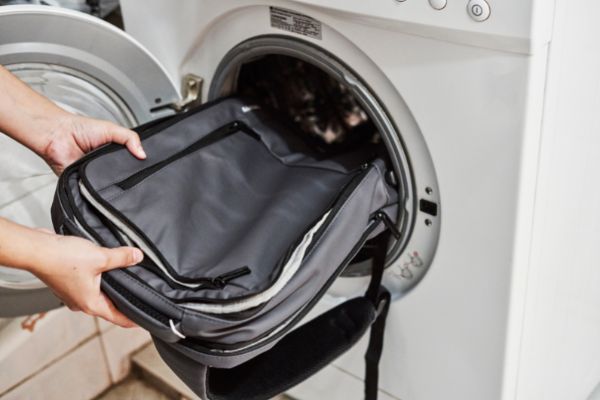Nylon is one of the most versatile and durable fabrics out there, but it can still shrink if you don’t take proper care when washing and drying.
Nylon is a synthetic fiber that is known for its durability and resistance to shrinking. However, nylon garments can still shrink if they are exposed to high heat or subjected to aggressive washing techniques.
To minimize the risk of shrinkage, it is recommended that nylon garments be washed in cool water and either hung to dry or tumble dried on a low heat setting. It is also important to check the care label of the garment for specific washing instructions.
Nylon is great for the active lifestyle because of its flexibility and breathability. It’s perfect for those days spent scaling mountains or lounging on beaches – however, it’s important that we understand how to properly care for our nylon garments so they don’t end up shrinking away from us (and leaving us uncomfortable!).
With knowledge comes power; understanding how to prevent any potential problems can give you peace of mind as well as freedom from worry about ruining your favorite pieces. Let’s find out more about keeping our nylon in top form!
Characteristics Of Nylon Fabrics
It’s no surprise that nylon fabrics have become increasingly popular among outdoor enthusiasts. Not only do they offer versatility and durability, but their lightweight construction makes them perfect for a variety of activities.

When it comes to caring for your nylon garments, however, there are certain washing instructions, stretching techniques, dyeing processes, fabric weight and storage methods you should be aware of.
When selecting the right material for any given application – from apparel to camping gear – understanding how different types of fabrics will react in various conditions is essential. This can help ensure the longevity of your products as well as give you peace of mind when spending time outdoors.
With this knowledge in hand, let’s explore some factors affecting nylon shrinkage…
Factors Affecting Nylon Shrinkage
When it comes to nylon shrinkage, there are a few key factors that come into play. Dyeing techniques and laundering methods certainly influence the amount of shrinkage experienced. Additionally, fabric weight, storage conditions and weave structure are all important considerations when discussing this topic.

For instance, if an item is made from lightweight nylon and stored in hot or humid environments for extended periods of time, then you can expect more shrinkage than with heavier fabrics kept in cooler rooms.
Similarly, tightly woven items will often be less prone to shrinking than those with looser weaves.
With these points in mind, let’s look at how preventative strategies can help minimize any potential issues related to shrinkage.
Preventative Strategies
Now that we’ve covered the factors affecting nylon shrinkage, let’s look at some preventative strategies.
Firstly, pre-washing techniques can be used to remove any residual chemicals or soil from the fabric and help reduce shrinking due to water absorption.
Temperature control is also key – avoid hot washes and opt for cooler temperatures when washing fabrics made with nylon fibers.
It’s important to consider fabric weight too; heavier fabrics are more likely to shrink than lighter ones so make sure you check the care label before laundering.
Finally, air drying your garments rather than tumble drying them will help minimize shrinkage caused by heat.
When it comes to restoring fabric back to its original size, temperature control and careful monitoring of water temperature are two must-dos.
Hot water should always be avoided as it will cause further shrinkage, while cold or lukewarm water helps relax fibres and restore a garment’s shape after being washed.
Wringing out excess moisture prior to hanging items up on a clothesline or drying rack could also work in your favor here!
How To Restore Fabric To Original Size
Restoring fabric to its original size is an easy process. With some heat shrinking, the fabric will be able to return to its usual dimensions with minimal effort. Here’s a few tips for getting your fabrics back in shape:
- Use machine washing if you need to shrink something that’s already been washed many times – this will help it regain stiffness and elasticity.
- Air drying is also important – as soon as the item comes out of the washer, lay flat on a towel or hang up so that it won’t lose any more moisture than necessary.
- Steam pressing can help restore fabrics to their original form after they’ve been dried. This is especially helpful for items made from natural fibers like cotton and wool which tend to become limp over time.
As outdoor experts know, these methods are tried-and-true ways of bringing fabric back to life while preserving its quality and integrity. So don’t let wrinkles get you down; use these steps instead!
Frequently Asked Questions
What Is The Best Way To Clean Nylon Fabric?
As an outdoor expert, I’m often asked about the best way to clean nylon fabric.
When dealing with stubborn stains, spot cleaning is a great option and can be done by mixing up a solution of liquid detergent and cool water.
For more difficult marks, hand washing may be necessary using a mild soap or shampoo in lukewarm water.
Additionally, bleach should only ever be used as a last resort so make sure to read the fabric’s care label first!
To ensure your nylon garments stay looking their best for longer periods of time, consider steam pressing them when needed – this will help keep those pesky wrinkles at bay without damaging the material itself.
Does Nylon Shrink More In Hot Or Cold Water?
With the right care, you can keep your nylon fabrics looking their best and avoid any unwanted shrinking.
When it comes to washing instructions, cold water is usually recommended to prevent shrinkage of the material.
However, if you’re shaving or dyeing nylon fabric, hot water may be necessary for a better result.
For ironing temperatures, use low heat as anything too high could also cause some amount of shrinkage in the nylon fabric.
To minimize shrinkage while storing your clothing items made with nylon fabric, hang them up instead of folding them – this will help maintain the shape of your garments!
As an outdoor expert, these are all important tips to remember when dealing with nylon fabrics!
Is It Safe To Put Nylon Fabric In The Dryer?
As an outdoor expert, I’m often asked if it’s safe to put nylon fabric in the dryer.
The answer is yes! But you should use low heat and keep an eye on drying time.
Nylon can shrink or wrinkle when exposed to high temperatures.
Hand washing your clothing with cold water is best for stain removal, but you may use warm water too.
When ironing your garment, make sure the temperature is set between a medium-low and low setting – this will help prevent shrinking and wrinkling of your garments.
How Long Does Nylon Take To Dry?
When it comes to protecting colors, avoiding wrinkles and pre washing tips for nylon fabrics, one of the most important things you can do is ensure that your drying time is quick – but not too fast.
As an outdoor expert, I know the importance of a fabric that dries quickly while also avoiding shrinkage.
The key here lies in proper steaming advice: if you steam your nylon fabric before putting it into the dryer, this will help ensure shorter drying times without compromising on quality or longevity.
Hence, with the right approach, you can make sure your nylon dries in no time at all – giving you more freedom to enjoy life outdoors!
Are There Any Risks To Using A Hot Iron On Nylon?
As an outdoor expert, I’m often asked are there any risks to using a hot iron on nylon?
The answer is yes! It’s important to understand the temperature of the iron and use it accordingly. Too hot of an iron can cause shrinkage in your nylon fabric which could ruin your garment or gear.
To prevent this from happening, pay attention to dyeing techniques, stain removal, and care instructions when working with nylon fabrics. Following these guidelines will help ensure that you get the most out of your nylon fabrics without ruining them in the process.
Conclusion
Nylon fabric is a synthetic material that can be tricky to clean and care for. With the right approach, however, you can make sure your nylon garments come out looking their best after every wash.
It’s important to know that nylon does shrink in hot water or when heated with an iron, so take extra caution when cleaning and drying this type of fabric. Cold water should always be used when washing fabrics made from nylon, as it will help prevent shrinking.
If using a dryer, set on low heat and remove promptly once finished – otherwise, hang-dry is recommended. Lastly, keep an eye out for any potential damage caused by too much heat while ironing and avoid putting high temperatures directly onto the fabric if possible.
As an outdoor enthusiast I know how difficult caring for certain materials can be but with enough patience and attention to detail you’ll ensure your apparel stays looking its best!





